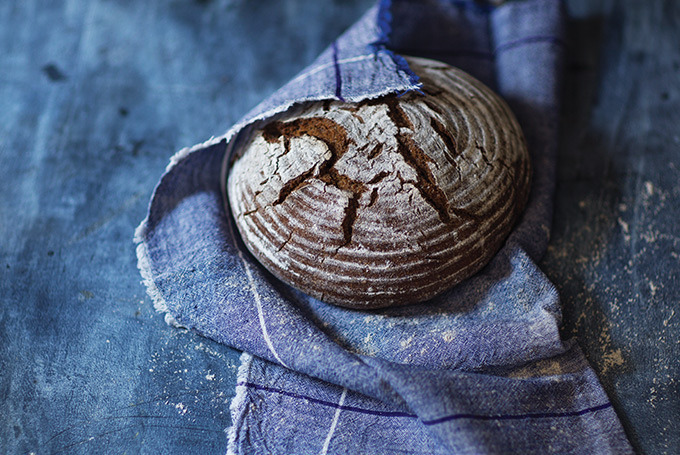How To Make Rye Bread
Bread lovers, this book is for you
We may receive a commission on purchases made from links.
Notably sticky, ever-stubborn rye dough is often overlooked in favor of more conventionally beautiful breads, like braided challahs or open-crumbed boules. But cookbook author Stanley Ginsberg is sticking it to the uninitiated with his latest work, The Rye Baker. The cookbook—the only English book devoted entirely to rye baking tips and recipes—is the first of its kind.
So what took so long? It's clear from the introduction alone that this project comes from a place of passion, which Ginsberg says transitioned "from a baking book into a love story." As with his first book, he bakes through hundreds of rye recipes from around the globe.
 Lithuanian Christmas Bread
Lithuanian Christmas Bread
It's structured as a meander through the world, starting in America then crossing the ocean to the bold loaves of Northern Germany and the sweeter versions of Sweden and Finland. Ginsberg explains how Americans are primed to a highly modernized rye bread that's essentially as old as time, and he delivers a convincing argument as to why we should rescue it from deli obscurity.
Ginsberg also gets technical, going into the precise dynamics involved in yeast fermentation and types of sponges needed. But he writes with a light hand, and if you look closely, you'll even find a Death of a Salesman quote peppered in. Once you master the basics though, you'll be primed to make a lifetime's worth of bread. Here are five reasons why we're riding the rye train.
① It Goes Way Back
Rye is sturdy. Over its 13,000-year history, it's proven that it can stand freezing temperatures, survive in a drought and grow in clay-like soil. It's also what American settlers were eating for their first two centuries, and you can thank 1920s immigrants for giving it a boost after it fell out of favor in the face of big wheat companies.
② It's an All-Purpose Alternative
Though it's not gluten free, rye is a good substitute for refined wheat flours. It's bold enough to make a loaf of its own, but try it mixed with other flours like buckwheat and spelt. You'll forget all about puffy store-bought white bread.
③ It's Flexible
Rye bread isn't just for mile-high pastrami sandwiches: You'll find recipes from the shores of the Baltic Sea that lean toward the sweeter side, like rye-raisin scones and quick bread sweetened with molasses. The result is pleasantly funky, not unlike the sweet-sour combination of a sour beer or natural wine.
④ It's All About the Add-Ins
East Berlin Malt Rye
⑤ Everyone Else Is Doing It
The rest of the world is feasting on rye, so it's time we take our head out of the white flour-filled sandbox. Ginsberg describes America's rye culture as being "on the cusp of a renaissance," which is clear in the diverse ways bakeries are using the grain, like the chocolate-rye cookies at Tartine in San Francisco.
Images from The Rye Baker: Classic Breads from Europe and America by Stanley Ginsberg. Copyright © 2016 by Stanley Ginsberg. Reprinted with permission of W.W. Norton & Company, Inc. All rights reserved.

